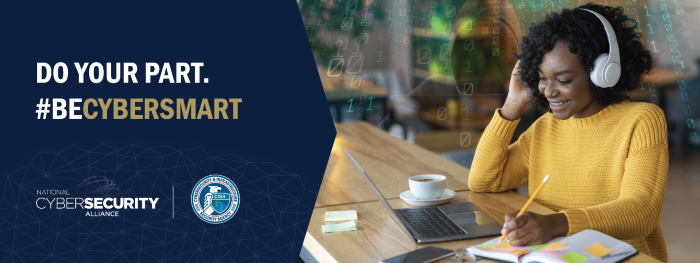Prior to working at a cybersecurity company, I have to be honest, I didn’t think much about my data or online privacy. After two years in the industry, it’s safe to say my attitude toward online security has changed.
Throughout the month of October, Kaspersky North America will be celebrating National Cybersecurity Awareness Month (NSCAM), an initiative we have championed for many years. This year’s emphasis is If You Connect It, Protect It — something I believe is extremely relevant. With the sheer number of connected devices popping up in every facet of the consumer industry, it’s important for us to be knowledgeable in protecting our smart devices.
Before Kaspersky, I didn’t give much consideration to the security aspect of my devices, including how my data was handled, or just how much of my data companies were collecting. Now that I spend more time reading industry-related news and research, I realize how vulnerable those connected devices are, putting my digital data at stake.
Now, don’t get me wrong. I’m not saying that IoT devices are bad. Take, for example, some of the more common smart devices. The Nest thermostat claims to help you save energy, which in turn saves you money on your energy bill. The Eufy Video Doorbell sends you alerts if it detects activity outside your front door (perfect for catching porch pirates, if you ask me). The Apple Watch not only tells you the time but also works as a fitness tracker, among other things. You get the idea.
Smart devices were created for convenience, with the purpose of simplifying everyday tasks. Most are extremely affordable, which makes them attractive to a broad range of spenders. However, connected devices have not only penetrated the consumer market, they are also found in manufacturing, health care, aviation, city infrastructure, retail, and the automotive industry.
This October, the U.S. Cybersecurity & Infrastructure Security Agency (CISA) and the National Cyber Security Alliance (NCSA) are challenging individuals and organizations to take responsibility for protecting their part of cyberspace; they’re asking us all to protect our smart devices.
If you’re not sure where to get started, see our tips below.
Review and research
- Before you buy a smart device, it’s important to read reviews and do your research, focusing on device security. Take note of how the manufacturer responds and reacts to discovered vulnerabilities.
Keep tabs on your apps
- Most connected appliances, toys and devices are supported by, and may even require, a mobile app. When downloading a new app, check for the permissions it requests, and only allow what is necessary.
Get savvy about Wi-Fi
- When you connect your smart devices, connect them to your guest Wi-Fi network to ensure any malware or vulnerabilities that exist in your smart device don’t compromise your smartphone or computer.
Stay updated
- Do your best to stay in the loop about updates and discovery of vulnerabilities. It’s good practice to install all updates released by the developers in a timely manner.
Lock down your login
- Use long and unique passwords for all your smart devices — yes, all 15 of them. Using strong passwords prevents attackers from brute-forcing their way into all of your accounts.
For more tips on how you can secure your connected devices, follow @kaspersky for updates. NSCAM has also put together an extensive list of resources to help you reduce cybersecurity risk and protect yourself online.
 NCSAM
NCSAM



 Tips
Tips